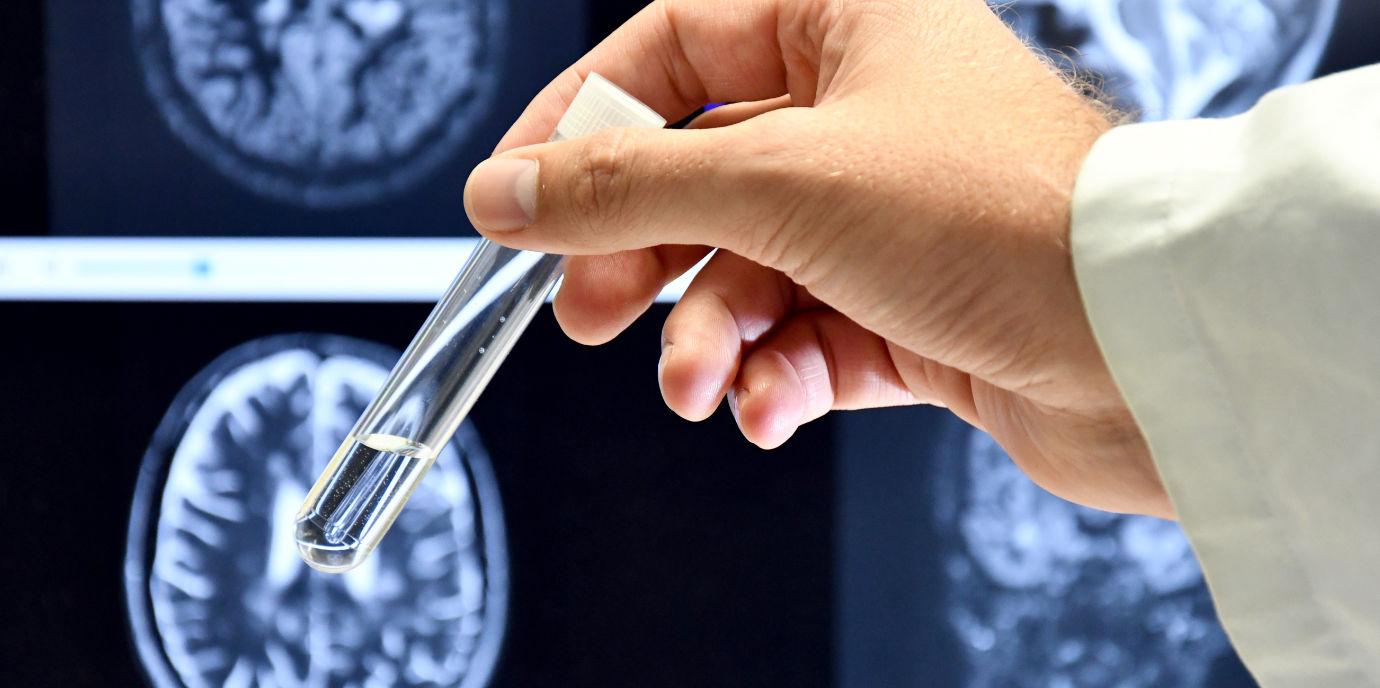The combination of two new biomarkers improves the diagnosis and treatment of MS
The course of chronic inflammatory multiple sclerosis can be very different. Individualized therapies for MS patients require an early and accurate prediction of future disease activity. This is made possible by combining different biomarkers, as shown in a study by neuroimmunologist Harald Hegen at the University Clinic of Neurology.
Multiple sclerosis (MS) is a common neurological disease among young people. Inflammatory changes in the central nervous system (brain and spinal cord) can lead to individually variable symptoms such as paralysis, hyposensitization, vision disturbances, balance problems, gait impairments, and cognitive impairment. Usually, these symptoms appear in the form of so-called blisters. Ultimately, there is a risk of permanent disability at an early age.
Early diagnosis enables personalized treatment
“When the next attack occurs varies greatly between affected patients and ranges from several episodes a year to phases that have been stable for years,” says Harald Hegen, a neuroimmunologist from the University Clinic for Neurology (Director: Stefan Kechel). Advances in the development of disease-modifying therapies in recent years now allow effective prevention of outbreaks. These treatments differ not only in their effectiveness, but also in potential side effects and risks. Accurate prediction of future disease activity is of great importance in order to be able to make a reasonable benefit/risk assessment before proceeding with a treatment tailored to the individual patient.”
Harald Hegen, who has been active in clinical research and care with a focus on MS for many years, recently with colleagues was able to discover a protein in cerebrospinal fluid (Liquor cerebrospinalis) – the so-called κ-fluorescent light chains (κ-FLC, chains kappa-free light) – are known biomarkers for predicting early MS activity. The usefulness of κ-FLC as a biomarker in MS was confirmed at an international consensus meeting organized by the Neuroimmunology Working Group (leader: Florian Disenhammer) with the support of ECTRIMS (European Committee for Treatment and Research in Multiple Sclerosis) in Vienna.
The suite of vital signs accurately predicts the activity of multiple sclerosis
“In addition to the inflammatory marker κ-FLC that we have established, another very promising biomarker in MS research is sNfL, which is released from neurons after neuronal damage. For the first time, we addressed the issue of Whether the combination of these two biomarkers improves the predictive power of MS activity,” Higgin explains.
Funded by a grant from the Austrian MS Society, carried out in collaboration with Leopold Franzen University (Department of Statistics: J. Walde) and in the specialized journal eBioMedicine In the published Innsbruck study, 86 patients with early-stage MS were included and followed up for four years. “Our results show that the combination of these two biomarkers allows for a more differentiated assessment of risk for future disease activity. In the case of high values of the κ-FLC index plus the sNfL Z score, there is a 98 percent probability that the next flare can be expected within a year; whereas Normal levels of both biomarkers make a relapse unlikely in the next 12 months,” Hegen reports.
With such an accurate prediction of future disease activity, it should be possible to select an individually appropriate treatment from the now wide range of different disease-modifying therapies. “With the predictive power of combining both biomarkers, assessing the benefits and risks of different immunotherapies has become much easier,” Higgin asserts. Results of a prospective, multicenter study led by Innsbruck to confirm these findings are eagerly awaited.
(23.05.2023, Text: D. Heidegger, Bild: D. Bullock)
Links:
Free kappa light chain and neurofilament light independently predict activity in early multiple sclerosis–a cohort study. Harald Hegen et al., eBioMedicine, Published Apr 19, 2023, Volume 91, 104573 May 2023
https://doi.org/10.1016/j.ebiom.2023.104573
Cerebrospinal fluid kappa-free light chains for the diagnosis of multiple sclerosis: a consensus statement. Harald Hegen et al. Molt Scaler. 2023 Feb; 29 (2): 182-195
https://doi.org/10.1177/1352458522113421
University Clinic of Neurology
Department of Statistics, Leopold Francis University
Archive: New biomarker in multiple sclerosis enables early risk assessment and targeted treatment selection

